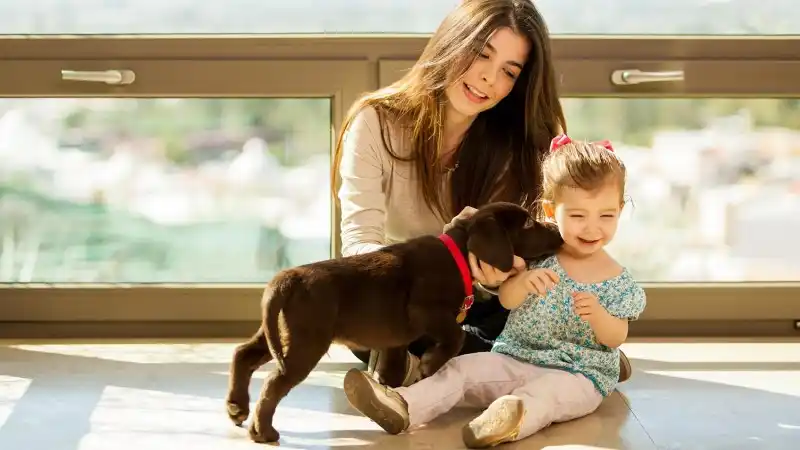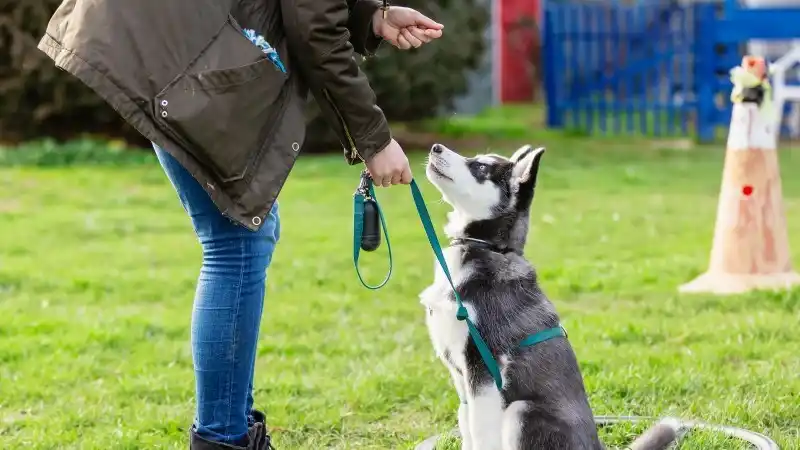How to Warm-Up & Cool Down Your Dog During Exercise
Explore how to warm up & how to cool down your dog when exercising. Find out about dog stretches and other tips to add to your pup's fitness regimen!
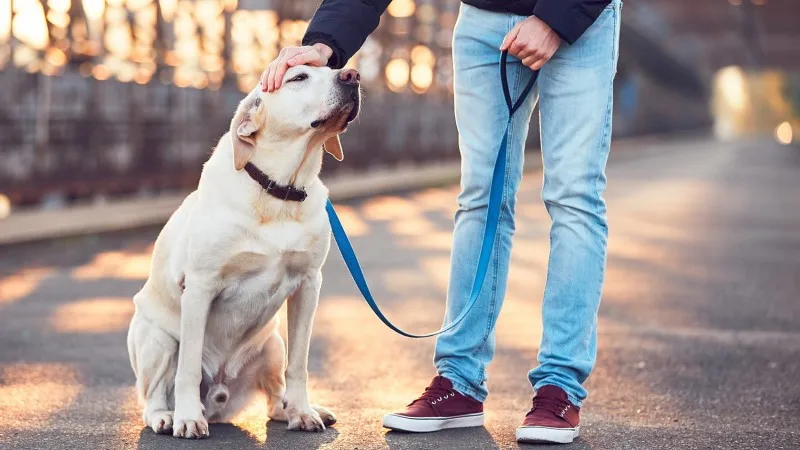
That’s a tail-wagging “YES!”
You should warm up your pup before any dog exercise, and then cool them down after the exercise session. Whether you're just going for a morning jog or you have loftier exercise plans like a long hike, your pup will thank you for a solid warm-up and post-workout cool-down every time they’re out and about.
Let's take a look at some of the best options for warm-ups and cool-downs for dogs, how and when you should do them, and a few tricks of the trade to get you and your dog on your way.
Dog Warm-Ups: Pre-Workout
What we know about the advantages of warming up for humans can be applied to dogs. In general, warm-ups increase the blood flow to the muscles, improve overall flexibility, slowly increase the heart rate, and even increase the elasticity of the ligaments. Warm-ups are also thought to decrease the risk of injury, making them an especially smart addition for overweight dogs, senior dogs, and disabled dogs.
Here are a few easy dog warm-up options to get you started:
Loose Leash Walking
You can do five minutes of loose leash walking before a run, hike, fitness training session, or any other type of dog exercise. What if you can’t get outside before an indoor session, but need to warm-up your dog? You can leash your dog to a belt around your waist and have them follow you around the house while you do active chores – dishes, vacuuming, laundry, etc. This waist-tethering is also a great cool-down technique!
Position Changes
Ask your dog to do sit-to-downs, sit-to-stands, and other combinations of sits, downs, and stands in a row. To learn more, read this blog on how to teachstand & sit commands and puppy pushup exercises!
Figure 8s
Warm up your dog’s entire body by doing figure 8s around two soccer cones (two tall rain or winter boots work just as well). Place the cones about two times the body length of your dog apart. Using a treat in front of their nose, lure your dog around the cones in a figure 8 pattern. Vary which direction the dog starts the pattern - sometimes left through the center of the 8 and sometimes right through the center of the 8. The closer your dog is to the cones, the more they will work their spinal flexibility.
Avoid any passive stretching before exercise. According to the American Sports and Fitness Association, passive stretching is reliant on an external force, such as gravity, a partner (or you stretching your dog), or using stretching accessories, such as bands.
Conversely, adding active stretching as part of your dog warm-up is just fine. This means your dog will be actively moving one muscle group to stretch another muscle group.
According to dog fitness trainer Bobbie Lyons at Pawsitive Performance, active stretches should only be held for one to two seconds. This type of stretching does not involve the owner stretching the dog’s limbs into flexion or extension. If the dog performs the stretch with no external force (such as their owner), it is an active stretch.
After five minutes of loose leash walking, active stretching -- such as having your dog do a few play bows, front paw targets with their front limbs on a chair or bench to stretch their hips, or right and left circles -- is a great addition to any canine warm-up.
Canine Cool-Downs
Cool-downs are every bit as important for maintaining canine health as a warm-up. Cooling down allows your dog's body temperature, breathing, and heart rate to slow down gradually after an exercise routine is completed. In addition, a cool down may reduce soreness while helping to decrease the recovery time needed between exercise sessions with your dog.
How can you accomplish the type of cool down your dog needs to recuperate after a workout? As mentioned above, you can passively stretch your dog as part of the cool down. Prior to stretching, be sure you allow your dog's heart rate to lower a little and let their muscles cool off from “hot” to “warm.” You can accomplish this with a few minutes of loose leash walking. The dog must be relaxed during stretching and you should never force the dog into any stretching position.
What are some of the best options for cool-down stretching?
Nose to Side of Body Stretches
Use a treat in front of your dog’s nose to lure them to place their nose to their right shoulder -- as near as possible given the dog's natural anatomy -- for five seconds. Let your dog return their head to a neutral spine -- nose in front of body -- and then give them a treat.
Next, repeat the stretch with the nose to the right rib cage for five seconds and the treat at neutral. Then repeat with the nose to the right hip for five seconds and the treat at neutral. Repeat the entire series on the left side. Your dog's spine should remain parallel to the ground, and they should not tilt their head up or down (unless you were directed to do so by your veterinarian as part of a special stretch specifically for your dog).
Play Bow
Have your dog hold a play bow for a longer duration than they did in their warm-up – around two to five seconds. Do this for three repetitions as a cool down option.
Spinal Flexion Stretch for Dogs
Have your dog look between their front two legs while standing. To do this, hold a treat between their two front legs so they look toward their stomach. This will stretch some of the opposing muscles in the spine that your dog didn’t stretch in the play bow. This is the equivalent of putting your chin forward and down on the front of your neck to stretch the back of your neck, making it a great way for your dog to limber up after intense exercise.
**Pro tip:**Engage in spinal flexion slowly and carefully with senior dogs -- this is a great stretch for them, but their old age may mean a tougher and deeper stretch that should be done over a longer period of time.
Other Dog Stretches
Other stretches should usually be held for 15-30 seconds in order for them to be an effective part of your dog's cool-down period. To learn more about stretching and how dog owners can properly guide their dogs through warm-up and cool-down, search online for dog stretching videos or consider taking online classes.
Adding stretching to your dog’s fitness regimen can help prevent injuries and ensure that your pup stays limber and active. Consider enrolling in pet insurance as another preventive measure. Coverage offered by AKC Pet Insurance (underwritten by Independence American Insurance Company) can help you prepare for unexpected vet bills and provide the best vet care when an injury or illness occurs.
Just as humans check with their doctors before engaging in new fitness routines, dog owners should also check with their veterinarians before proceeding with any new stretches or exercises. If you ever see any changes in your dog’s health or notice any discomfort, stop the activity and contact your veterinarian.
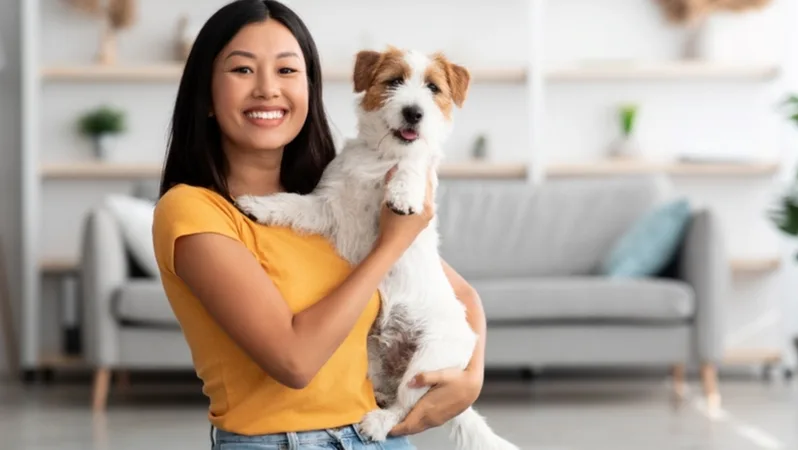
Every Dog and Cat Deserves the Pet Insurance of Champions
Get prize-winning care for your pets.
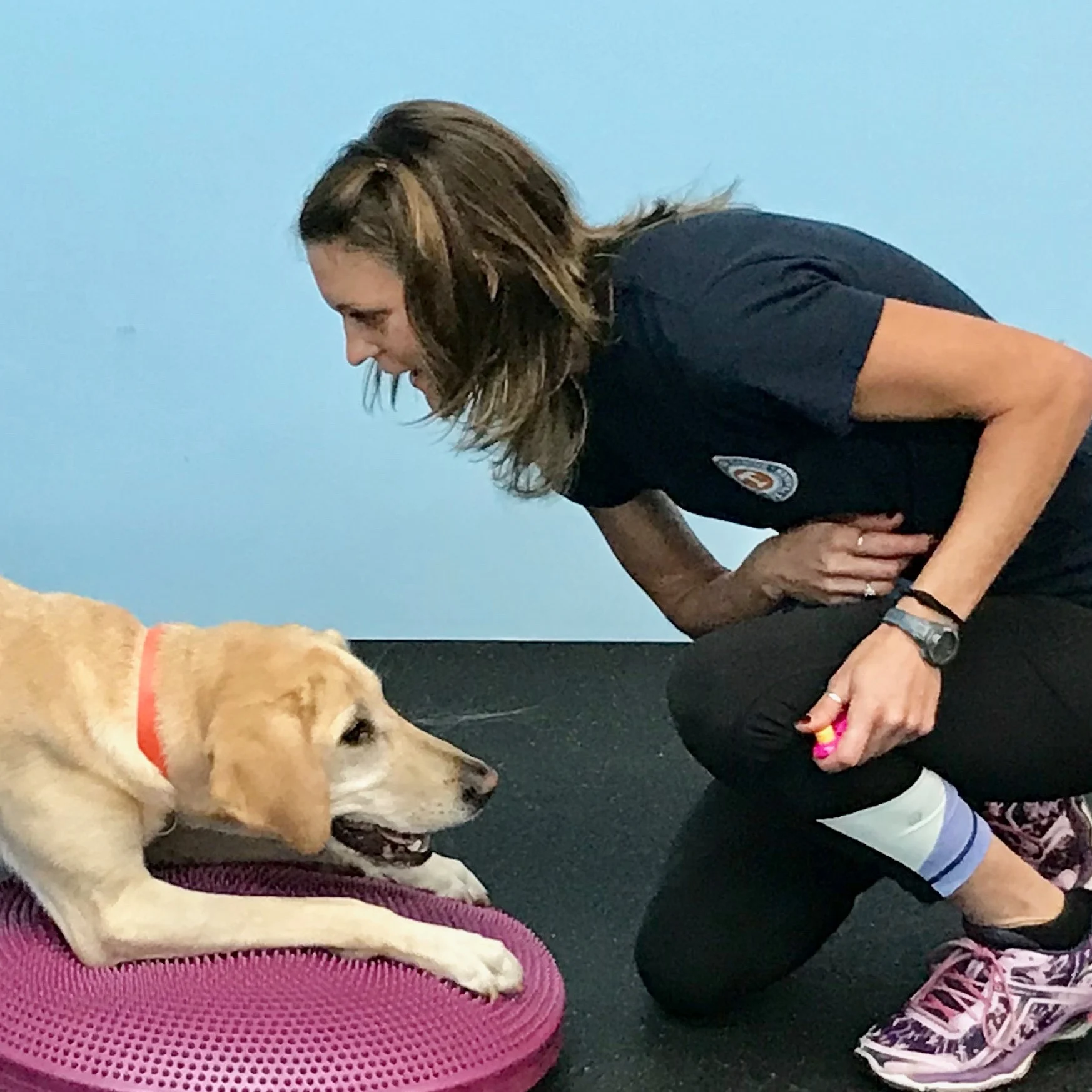
Jasey Day holds the Certified Canine Fitness Trainer (CCFT) credential through the University of Tennessee. She is a member of the Bobbie Lyons K9FITteam - a team of compassionate canine fitness instructors who actively teach others and continually expand their own knowledge. Since 2004, Jasey has taught a variety of workshops and classes on the following: Puppy, Canine Good Citizen/Family Pet, Advanced Family Pet, Canine Fitness, Canine Swimming, Rally, and Agility. In addition, Jasey has earned over 60 titles in Dock Diving, Agility, Rally, CGC and Trick Dog. Jasey has worked full time for the American Kennel Club since 2007 and teaches at Care First Animal Hospital in Raleigh, NC. Jasey’s Labrador Retrievers spend their free time hiking, training, and snuggling with Jasey.
READ MORE ARTICLES
